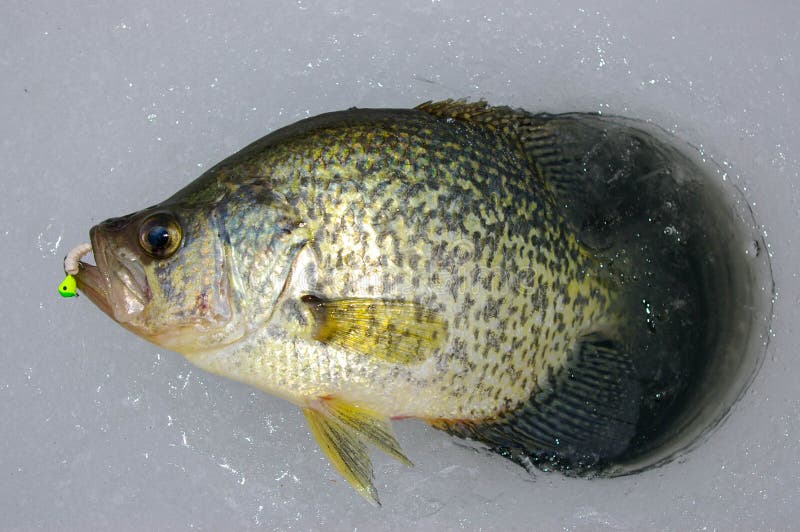I begin to think about ice fishing this time of year. I put a good amount of walleye on the table during the open-water season, but I know that a “hot” week or two on the ice in December or early January can pay off in many limits of bluegills and crappies. As far as I’m concerned, having plenty of panfish on hand in the freezer more than justifies the long hours spent cleaning them.
If you are traveling to the Chisago Lakes area this winter, your first order of business should be to stop in and see my friends at Frankie’s Live Bait and Marine, located in Chisago City. You’ll probably notice over time that I reference Frankie’s a lot, and for good reason. There are plenty of bait shops out there, but Frank and his staff absolutely know particular spots and what is currently working on our area lakes like nobody’s business. All of the folks in the bait and tackle shop are die-hard anglers and talk to customers every day, so on any given day they have specific fishing intel that’ll help you quickly get on fish.

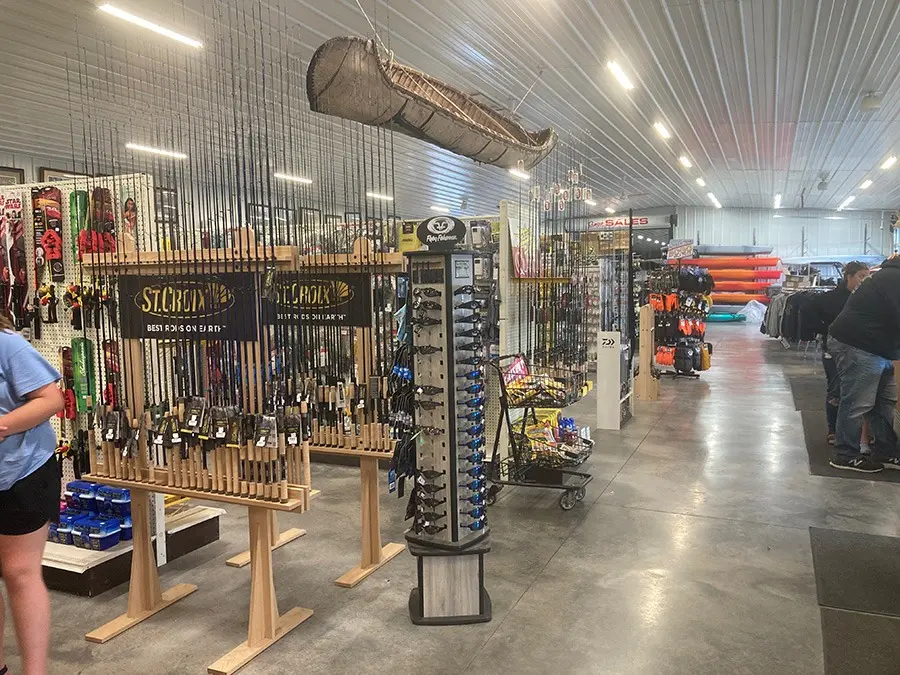
Good places to begin looking for fish is water that continues to hold weeds that is fourteen feet or less in depth. Bluegills and crappies will continue their fall pattern during the early ice period and will key on weeds and weed lines for oxygen, cover and the forage they feed on. Structure and weed type can vary greatly from spot-to-spot, so plan on punching quite a few holes within a given area, ranging in depth from five to fourteen feet. More holes mean more options, and allows you to keep on the move to locate active fish, instead of relying on the fish to move through a limited area. It is usually the case that you’ll be far more successful fishing proactively, as opposed to reactively.
Electronics play a key role in successfully locating fish. Locators will quickly tell you two (of three) vital pieces of information while greatly reducing time spent fishing unproductive water – location and depth of fish. Identifying your jig and fish in the water column on your flasher will immediately aid you in quickly adjusting jig depth and keep your bait in the strike-zone. The third factor, presentation is the simple process of determining how the fish like the bait presented to them. There will be days that the fish will be more responsive to seeing your jig moved fairly aggressively, while at other times you’ll find they prefer very little jig movement. If you’re catching enough fish in a given period of time, you’ll soon figure out what they prefer.
For panfish, I like to use a rod with a very slow action that will flex, when a fish is hooked, from cork-to-tip. These “noodle rods” have a fast taper, responsive tip that telegraph strikes well, eliminating the need for spring or slip bobbers that tend to foul-up at one time or another (usually on the coldest days). My only requirement for a reel is that it is in good working order. I put much more emphasis on rod and line selection than I do in choosing a reel. Any small reel that won’t fail or gum-up in cold temperatures works fine. (If you’re an old-timer, and it feels like I’m fast approaching that phase in life, you recall ice fishing when we used to bring in fish hand-over-hand, using wooden ‘ice sticks.’) Removing heavy, excess grease from the reel’s gears and spindle prior to hitting the ice goes a long way to ensure that your reel won’t “freeze up” while a good bite is on. Your line should be light and of a small diameter – 3lb. test line is the heaviest I’ll spool up for panfish. Light, thin diameter line performs best on small reels in winter weather, and will telegraph strikes far better than larger diameter line.
Finding a pattern that works best doesn’t take too much time initially, and is crucial for success. While bluegills will at least consider most any jig in their immediate area, through trial and error you’ll key in on a jig color, size and fall-rate that the fish prefer on any given day.
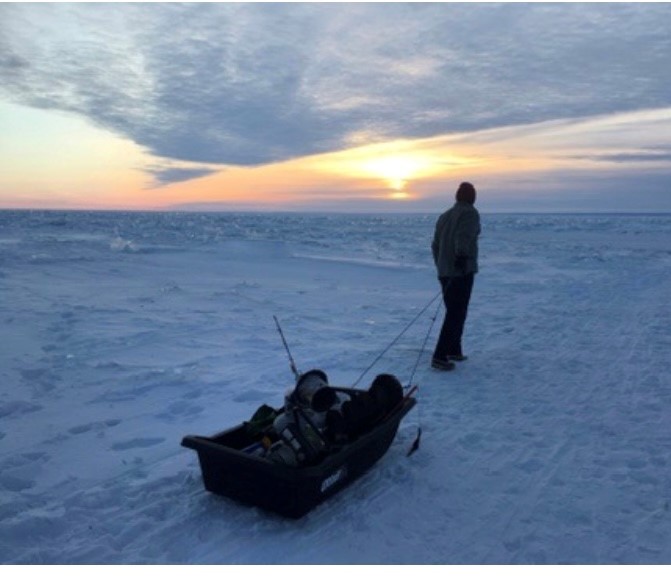
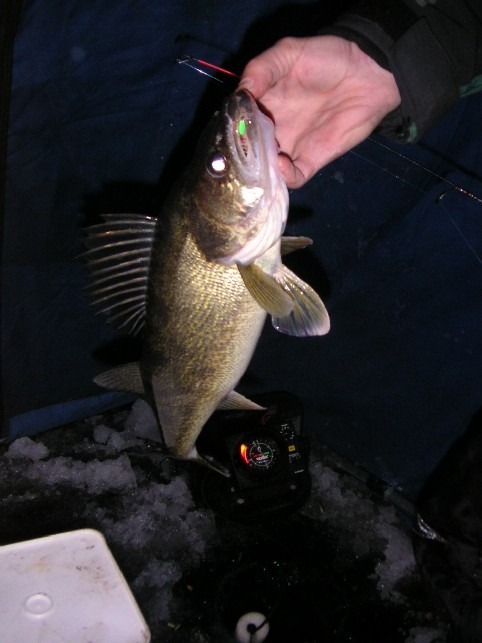
Some of the areas I like to hit for early-ice walleyes before the really cold weather sets in include all of the spots that held active walleyes during the last weeks of open-water fishing. The channel connecting Chisago Lake and South Lindström Lake, the south end of Chisago Lake near the eagle’s nest and some of the shallower bays adjacent to deeper drop-offs are good bets in late December and early January. Check out the area lakes by clicking here: Chisago Lakes Fishing Page.
Another key is to focus on weedlines and sharp breaks connecting shallower bay water to a lake’s main basin. A flasher will quickly reveal weedline depth and bottom hardness, so target the water at these key transition points. Typically, I punch a number of holes just off a weedline or sharp break and work the deeper water beginning at 3:00 p.m. with a jigging spoon and shiner. I move from hole-to-hole with my electronics in search of active fish while a shiner or small sucker under a tip-up is positioned at the top of the break in 8-12 feet of water.
One technique I apply when using a vertical jigging spoon is to hook the shiner or fathead through the upper mouth. At times when the spoon is just hanging in the water, the minnow is naturally upright and able to swim freely. Sometimes it’s effective to stop jigging at the critical moment when your flasher marks a larger fish under your hole that is investigating your bait. If the shiner or fathead attempts to flee from the walleye, it’ll demonstrate a more natural action than you could impart with your rod.
Also, don’t overlook the shallow bays during the early-ice period. In some cases, these bays get no more than 6-8 feet deep, but they’ll attract walleyes like a magnet during the critical 4:00p.m. to 6:00p.m. time period. I have a couple of friends who turned me onto a particular bay two seasons ago. It was quite a revelation to learn that they were catching a fair number of keeper walleyes on tip-ups in 5-6 feet of water.
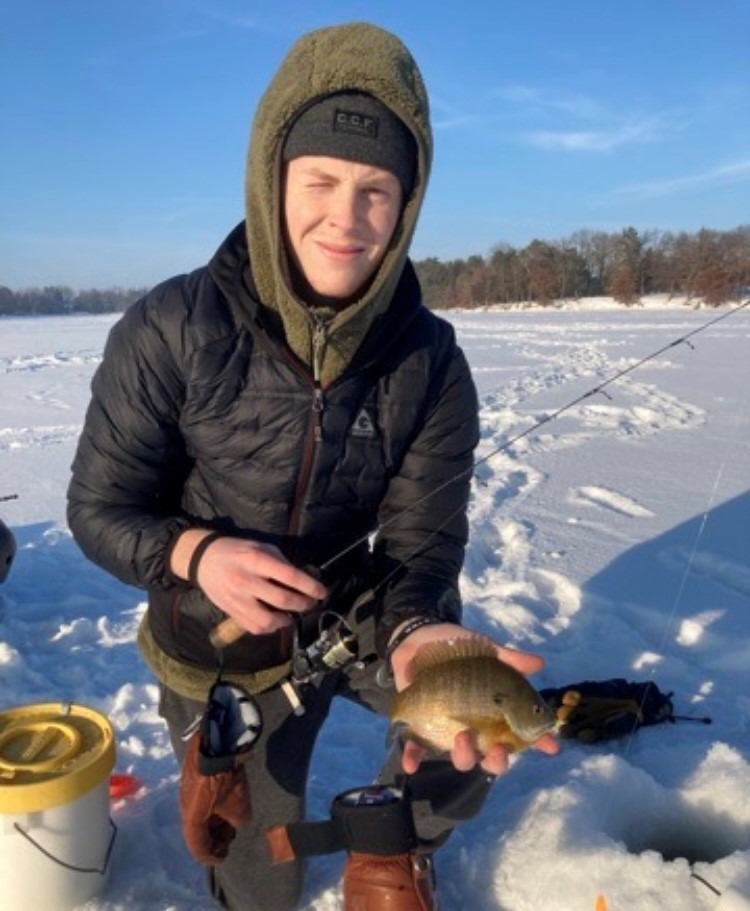
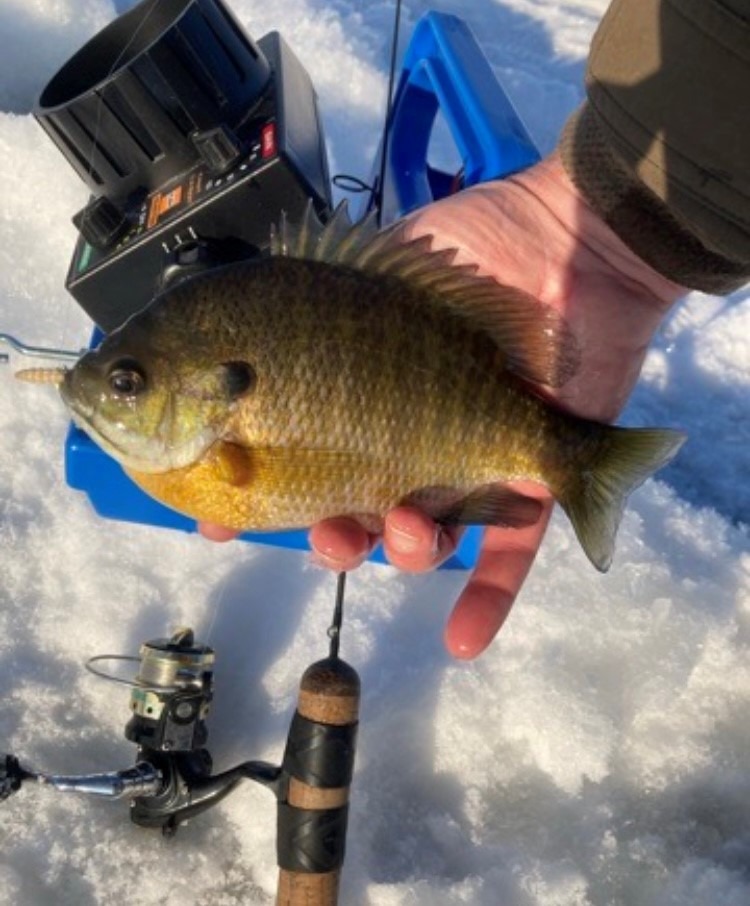
Finally, do yourself (and others nearby) a tremendous favor by punching your holes and getting set up before mid-afternoon. Operating augers just before and after sunset is never a good idea, particularly when targeting these shallower areas. Believe me, if you fire up the auger too close to dusk, it’ll cause the fish to scatter and raise the eyebrows of nearby anglers, so it’s a good idea to get your “noisy work” done by mid-afternoon.
Chasing walleyes during the early-ice period is a great way to kick-off the ice-fishing season. Your chances of finding numbers of aggressive, heavier fish on weedlines and sharper breaks will never be better.
December through early January can definitely prove to be a “hot” time of year for catching panfish and walleyes. Fast action and thoughts of fresh fish fries are all that’s necessary to get me out on the “hard water.”
Please keep in mind the DNR’s recommendation that you first contact local public safety officials (sheriff or local police department), or resorts and bait shops near the ice in question to inquire about ice thickness and quality before heading out to area lakes.
Be safe, and I’ll see you on the ice!
